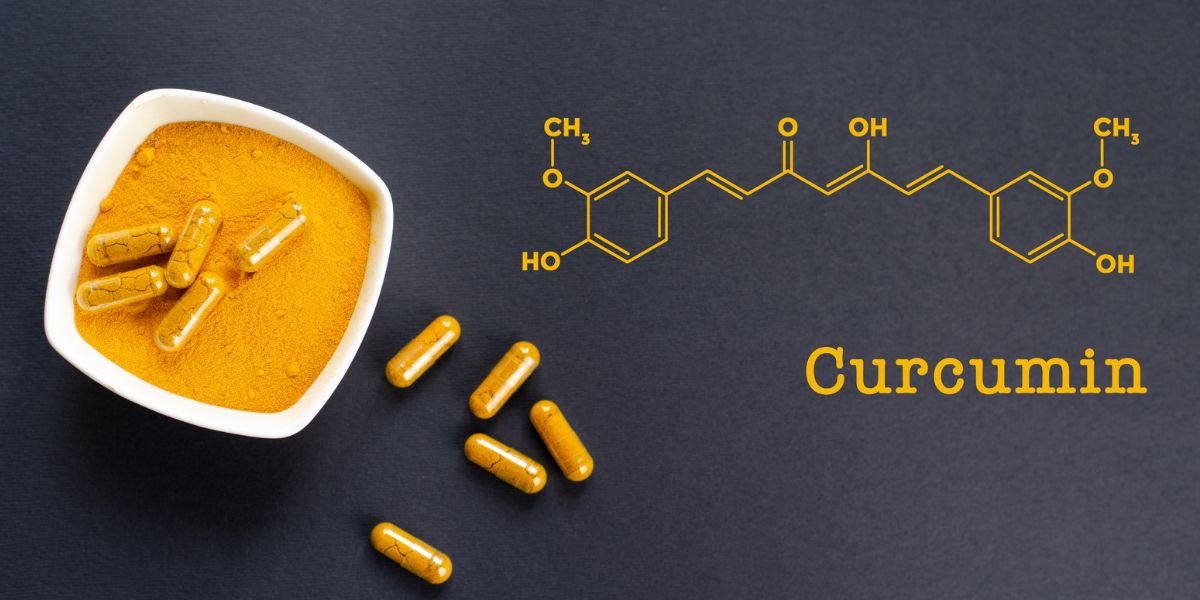Introduction
Curcumin is a bright yellow polyphenolic compound derived from the rhizome of Curcuma longa (turmeric), a member of the Zingiberaceae family. Widely recognized in traditional medicine systems such as Ayurveda and Traditional Chinese Medicine, curcumin has gained global attention in modern pharmacology due to its multifaceted therapeutic potential. Extensive research over the past decades has highlighted its antioxidant, anti-inflammatory, anticancer, neuroprotective and cardioprotective activities.
Chemical Profile and Bioavailability
Curcumin (C₁₀H₁₂O₆) is the principal bioactive constituent of turmeric, accompanied by related curcuminoids: demethoxycurcumin and bisdemethoxycurcumin. Despite its potent pharmacological properties, curcumin’s oral bioavailability is limited due to poor absorption, rapid metabolism and systemic elimination. Strategies to enhance its bioavailability include:
Pharmacological Actions of Curcumin
1. Anti-Inflammatory Activity
Curcumin exerts significant anti-inflammatory effects by modulating multiple molecular targets:
- Inhibition of NF-κB pathway: NF-κB is a key transcription factor controlling pro-inflammatory cytokines such as TNF-α, IL-1β and IL-6. Curcumin suppresses NF-κB activation, thereby reducing systemic inflammation (Aggarwal & Harikumar, 2009).
- COX-2 and LOX inhibition: Curcumin selectively inhibits cyclooxygenase-2 (COX-2) and lipoxygenase (LOX), key enzymes in prostaglandin and leukotriene synthesis, which mediate inflammatory responses.
Clinical implication: This anti-inflammatory property makes curcumin a candidate for managing arthritis, inflammatory bowel disease and metabolic syndrome-related inflammation.
2. Antioxidant Properties
Curcumin acts as a potent free radical scavenger and boosts endogenous antioxidant defense:
- Directly neutralizes reactive oxygen species (ROS) and reactive nitrogen species (RNS).
- Enhances activity of antioxidant enzymes such as superoxide dismutase (SOD), catalase, and glutathione peroxidase (Menon & Sudheer, 2007).
This dual action neutralizes free radicals and upregulating antioxidant enzymes protects cellular macromolecules like DNA, lipids, and proteins from oxidative damage.
3. Anticancer Potential
Curcumin interferes with multiple stages of tumor development, including initiation, promotion, and metastasis:
- Modulates signaling pathways: NF-κB, STAT3, PI3K/Akt, and Wnt/β-catenin.
- Induces apoptosis in cancer cells via caspase activation.
- Inhibits angiogenesis by downregulating VEGF and MMPs.
4. Neuroprotective Effects
Oxidative stress and neuroinflammation are central to neurodegenerative diseases such as Alzheimer’s and Parkinson’s. Curcumin:
- Reduces amyloid-beta aggregation and tau hyperphosphorylation.
- Suppresses microglial activation and inflammatory cytokines in the CNS.
- Improves cognitive function in preclinical models of dementia (Ringman et al., 2012).
5. Cardioprotective Benefits
Curcumin protects cardiovascular health through:
- Inhibition of LDL oxidation and reduction of oxidative stress.
- Anti-inflammatory activity in vascular endothelium.
- Improvement of lipid profiles and endothelial function.
Mechanism of Action (Molecular Level)
Curcumin interacts with multiple molecular targets:
- Transcription factors: NF-κB, AP-1
- Enzymes: COX-2, LOX, iNOS
- Cytokines: TNF-α, IL-6, IL-1β
- Growth factors: VEGF, TGF-β
Conclusion
Curcumin stands out as a versatile phytochemical with significant therapeutic potential. Its antioxidant and anti-inflammatory actions form the basis for protection against chronic diseases, including cancer, cardiovascular disorders, and neurodegeneration. Advances in formulation science continue to overcome bioavailability limitations, positioning curcumin as a promising natural therapeutic agent for both preventive and adjunctive healthcare.
References
- Aggarwal, B. B., & Harikumar, K. B. (2009). Potential therapeutic effects of curcumin, the anti-inflammatory agent, against neurodegenerative, cardiovascular, pulmonary, metabolic, autoimmune and neoplastic diseases. Int J Biochem Cell Biol, 41(1), 40–59.
- Anand, P., Kunnumakkara, A. B., Newman, R. A., & Aggarwal, B. B. (2008). Bioavailability of curcumin: Problems and promises. Mol Pharm, 4(6), 807–818.
- Menon, V. P., & Sudheer, A. R. (2007). Antioxidant and anti-inflammatory properties of curcumin. Adv Exp Med Biol, 595, 105–125.
- Ringman, J. M., Frautschy, S. A., Cole, G. M., et al. (2012). A potential role of the curry spice curcumin in Alzheimer's disease. Curr Alzheimer Res, 9(2), 175–180.
- Shoba, G., Joy, D., Joseph, T., et al. (1998). Influence of piperine on the pharmacokinetics of curcumin in animals and human volunteers. Planta Med, 64(4), 353–356.
Disclaimer: This blog is intended for educational purposes. Consult a qualified helthcare professtional for diagnosis and treatment protocols.
